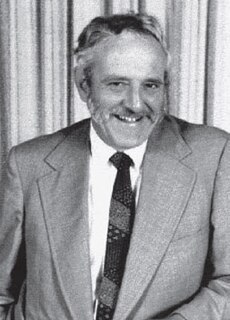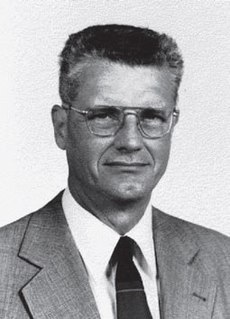
The Defense Intelligence Agency (DIA) is an intelligence agency of the United States federal government, specializing in defense and military intelligence.

The National Geospatial-Intelligence Agency (NGA) is a combat support agency within the United States Department of Defense whose primary mission is collecting, analyzing, and distributing geospatial intelligence (GEOINT) in support of national security. Initially known as the National Imagery and Mapping Agency (NIMA) from 1996 to 2003, it is one of the "big five" members of the United States Intelligence Community.

The National Reconnaissance Office (NRO) is a member of the United States Intelligence Community and an agency of the United States Department of Defense which designs, builds, launches, and operates the reconnaissance satellites of the U.S. federal government, and provides satellite intelligence to several government agencies, particularly signals intelligence (SIGINT) to the NSA, imagery intelligence (IMINT) to the NGA, and measurement and signature intelligence (MASINT) to the DIA.

Defence Intelligence (DI) is an organisation within the United Kingdom intelligence community which focuses on gathering and analysing military intelligence. It differs from the UK's intelligence agencies in that it is an integral part of the Ministry of Defence (MoD) rather than a stand-alone organisation. The organisation employs a mixture of civilian and military staff and is funded within the UK's defence budget. The organisation was formerly known as the Defence Intelligence Staff (DIS), but changed its name in 2009.
Samuel Loring Morison was a former American intelligence professional who was convicted of espionage and theft of government property in 1985 and pardoned in 2001. He was "the only [American] government official ever convicted for giving classified information to the press."

The Central Intelligence Agency, known informally as the Agency and the Company, is a civilian foreign intelligence service of the federal government of the United States, officially tasked with gathering, processing, and analyzing national security information from around the world, primarily through the use of human intelligence (HUMINT). As a principal member of the United States Intelligence Community (IC), the CIA reports to the Director of National Intelligence and is primarily focused on providing intelligence for the President and Cabinet of the United States.

The under secretary of defense for intelligence & security or USD(I&S) is a high-ranking civilian position in the Office of the Secretary of Defense (OSD) within the U.S. Department of Defense that acts as the principal civilian advisor and deputy to the secretary of defense and deputy secretary of defense on matters relating to military intelligence & security. The under secretary is appointed as a civilian by the president and confirmed by the Senate to serve at the pleasure of the president.

Dino Antonio Brugioni was a former senior official at the CIA's National Photographic Interpretation Center (NPIC). He was an imagery analyst and also served as NPIC's Chief of Information. During his 35-year career, Brugioni helped establish imagery intelligence (IMINT) as a national asset to solve intelligence problems. Even after retirement, Brugioni was considered to be the world's foremost imagery intelligence analyst.

Scott F. Large is an American intelligence officer and analyst who served as the fifteenth Director of the National Reconnaissance Office from 2007 to 2009. He previously served as the Principal Deputy Director of the National Reconnaissance Office from April to October 2007, and as the Central Intelligence Agency's Associate Deputy Director for Science and Technology.

Arthur Charles "Art" Lundahl was the key organizer of the US post-World War II imagery intelligence (IMINT), and an aerial-photography expert whose detection of missile installations in Cuba in 1962 led to the Cuban Missile Crisis.

The Directorate of Science & Technology (DS&T) is the branch of the United States Central Intelligence Agency (CIA) tasked with collecting and analyzing information through technological means and develop technical systems in order to advance the CIA’s intelligence gathering.

The CIA publishes organizational charts of its agency. Here are a few examples.
Technical Intelligence (TECHINT) is intelligence about weapons and equipment used by the armed forces of foreign nations. The related term, scientific and technical intelligence, addresses information collected or analyzed about the broad range of foreign science, technology, and weapon systems.

Robert Cardillo is a Distinguished Fellow at Georgetown University’s Center for Security and Emerging Technology. Prior to this appointment, he was the sixth Director of the National Geospatial-Intelligence Agency and was sworn in October 3, 2014. He was previously selected by Director of National Intelligence James Clapper to serve as the first Deputy Director of National Intelligence for Intelligence Integration in September 2010. Clapper said in a statement that the position would "elevate information sharing and collaboration" between those who collect intelligence and those who analyze it. Cardillo previously served as Deputy Director of the Defense Intelligence Agency (DIA). Prior to that, he served as the Deputy Director for Analysis, DIA, and Director, Analysis and Production, National Geospatial-Intelligence Agency (NGA).
Paul Dibb AM is an English-born Australian strategist, academic and former defence intelligence official. He is currently emeritus professor of strategic studies at the Strategic and Defence Studies Centre which is part of the Australian National University.

John J. Hicks was second director of National Photographic Interpretation Center (NPIC). Hicks was appointed as the Director of NPIC in July 1973, after retirement of Arthur C. Lundahl, first director of NPIC. He served as the Director of NPIC from July 1973 to May 1978.

Nancy E. Bone is an American former intelligence officer who served as Director of National Photographic Interpretation Center between October 1993 and September 1996.

Rutledge Parker "Hap" Hazzard was director of Science and Technology division of Central Intelligence Agency (CIA) from 1973 to 1978. He became director of the National Photographic Interpretation Center (NPIC) in 1978. After serving six years as director of NPIC from June 1978 to February 1984, Hazzard returned to the CIA's National Intelligence Office. He retired from public service in 1985.

Frank J. Ruocco was fifth director of National Photographic Interpretation Center (NPIC) from February 1988 to February 1991.
Deep Black: Space Espionage and National Security is a 1986 non-fiction book written by American journalist and author William E. Burrows. The book is promoted with the tagline "The Startling Truth Behind America's Top Secret Spy Satellites" on the covers of the second and subsequent editions.
















